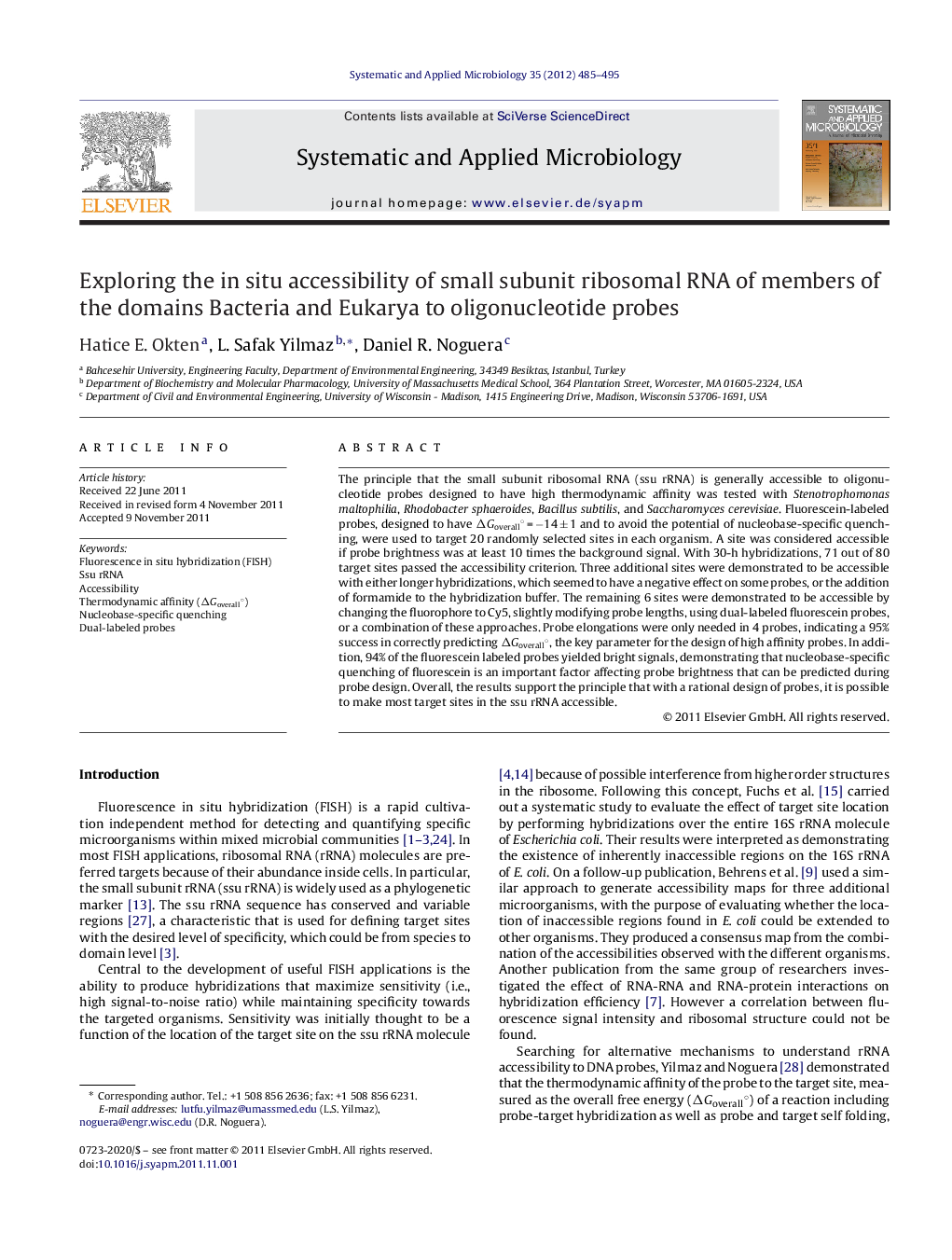| Article ID | Journal | Published Year | Pages | File Type |
|---|---|---|---|---|
| 2063807 | Systematic and Applied Microbiology | 2012 | 11 Pages |
The principle that the small subunit ribosomal RNA (ssu rRNA) is generally accessible to oligonucleotide probes designed to have high thermodynamic affinity was tested with Stenotrophomonas maltophilia, Rhodobacter sphaeroides, Bacillus subtilis, and Saccharomyces cerevisiae. Fluorescein-labeled probes, designed to have ΔGoverall° = −14 ± 1 and to avoid the potential of nucleobase-specific quenching, were used to target 20 randomly selected sites in each organism. A site was considered accessible if probe brightness was at least 10 times the background signal. With 30-h hybridizations, 71 out of 80 target sites passed the accessibility criterion. Three additional sites were demonstrated to be accessible with either longer hybridizations, which seemed to have a negative effect on some probes, or the addition of formamide to the hybridization buffer. The remaining 6 sites were demonstrated to be accessible by changing the fluorophore to Cy5, slightly modifying probe lengths, using dual-labeled fluorescein probes, or a combination of these approaches. Probe elongations were only needed in 4 probes, indicating a 95% success in correctly predicting ΔGoverall°, the key parameter for the design of high affinity probes. In addition, 94% of the fluorescein labeled probes yielded bright signals, demonstrating that nucleobase-specific quenching of fluorescein is an important factor affecting probe brightness that can be predicted during probe design. Overall, the results support the principle that with a rational design of probes, it is possible to make most target sites in the ssu rRNA accessible.
